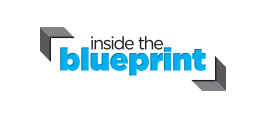Last month, researchers from an Israeli pharmaceutical company called Accelerated Evolution Biotechnologies announced that in about a year, they would begin clinical trials with a drug called MuTaTo that will essentially cure every type of cancer out there, including breast cancer.
Dan Aridor, "chairman of the board of AEBi and CEO Dr. Ilan Morad, say their treatment, which they call MuTaTo (multi-target toxin) is essentially on the scale of a cancer antibiotic – a disruption technology of the highest order." https://t.co/PC7nOSTlwF
— ReynardFou (@ReynardFou) January 30, 2019
AEBi, headed by CEO Ilan Morad and Chief Science Officer Hanan Itzhaki, has been working on a cancer treatment that will target multiple peptides on a cancer cell with a toxin that should wipe out the disease for good. They are calling the drug MuTaTo to describe the fact that it is a multi-target toxin. Though AEBi has only completed animal studies with MuTaTo, they felt confident enough about the preliminary results to make a bold announcement of their cancer-curing goals to The Jerusalem Post.
To understand why they feel MuTaTo has such great potential, think of the drug as the “triple cocktail” of cancer, an analogy to the groundbreaking three-drug treatment for HIV/AIDS that has been used since the late ‘90s. Highly active antiretroviral therapy, aka the triple cocktail treatment currently used to treat HIV, has been an effective way to treat patients because it addresses the illness from three different fronts. This diversified approach to treating the disease significantly reduces the chances that the virus will develop a resistance to the treatment, keeping AIDS at bay for much longer than other treatments.
Morad explained to the publication that the MuTaTo cancer cure will work in much the same way, a departure from current cancer treatments that often offer only temporary suppression of the disease. “If [a treatment] does not completely annihilate the cancer, the remaining cells can start to get mutations again, and then the cancer comes back, but this time it is drug resistant,” Morad said. “By using at least three targeting peptides on the same structure with a strong toxin, we made sure that the treatment will not be affected by mutations.” Targeting three peptides on a mutating cell exponentially decreases the chance that the cell will develop resistance to the triple-threat treatment.
Chairman of AEBi Dan Aridor summed up MuTaTo as a wonder drug that will destroy cancer cells while maintaining a patient’s quality of life: “Our cancer cure will be effective from day one, will last a duration of a few weeks and will have no or minimal side-effects at a much lower cost than most other treatments on the market.” The negative side effects will be so negligible that Morad compared them to “side effects at the level of ibuprofen or a common aspirin.” Negative side effects from cancer treatments typically occur when the good cells are taken down with the bad. Because MuTaTo will only target cells that meet a specific set of criteria — a combination of peptides — the chances that the drug will attack non-cancerous cells will be much reduced, compared to drugs that are currently on the market.
Experts Swiftly Dismiss MuTaTo Cancer Cure As Medical Fantasy
If MuTaTo lives up to its creators’ expectations, it will truly be a miracle drug. To medical experts though, MuTaTo sounds too good to be true.
Upon reading the news that AEBi expected to have a universal cure for cancer within a year, medical experts were quick and blunt in their response. Deputy Chief Medical Officer for the American Cancer Society Dr. J. Leonard Lichtenfeld posted a skeptical breakdown titled “A Cure for Cancer? Not So Fast” on his blog the very next day. He allowed space for optimism and hope, but reminded his readership that “as experience has taught us so many times, the gap from a successful mouse experiment to effective, beneficial application of exciting laboratory concepts to helping cancer patients at the bedside is in fact a long and treacherous journey, filled with unforeseen and unanticipated obstacles.” While some animal studies have been able to predict the outcomes of human studies, just as many of them end up having no correlation in results.
The director of Perlmutter Cancer Center of NYU Langone, Dr. Ben Neel, had an even simpler reason for his skepticism. “[Cancer] is multiple diseases, and it is highly unlikely that this company has found a ‘cure’ for cancer any more than there is a single cure for infections.” In other words, there will never be a magic bullet for cancer because the disease exists in countless manifestations.
Others were intrigued by some of AEBi’s claims, but pointed out that the company’s report was based on research that had not been published in peer-reviewed medical journals. Because of this, there currently is no way for the medical community to actually assess whether the study was well designed to produce reliable results. “[The] only data they show on their website is presumably not peer reviewed and is difficult to interpret in that context,” said Dr. Russell Pachynski of Washington University School of Medicine. “They may have a great idea for the ‘cure’ of cancer, but without convincing, peer-reviewed, published data showing evidence of this, their claims are difficult to take at face value.”
AEBi responded to this criticism, explaining that as a small company competing with the likes of Big Pharma, they did not have the budget to submit their research for publication and had instead decided to spend their funds on developing their product. “Advancing the research and finding more and more targeting peptides, or doing many experiments to write an article? What would you do, if you had to choose,” posed Morad in an interview with the Times of Israel. To someone unfamiliar with medical research, his question may sound fair and practical, but it does little to win confidence among the medical community.
Recent History of Cancer Medicine Says “Be Skeptical”
The last breast cancer drug to hit the market was Pfizer’s Ibrance back in 2015. Ibrance, used in tandem with the breast cancer drug letrozole, demonstrated roughly double the length of progression-free survival compared to using letrozole alone. Upon the publication of these results in the New England Journal of Medicine, media outlets and investors had been cautiously awaiting FDA approval of the drug; in hindsight, this caution was wise.
A follow-up report on Ibrance found that the new treatment had a high occurrence of severe side effects, with over three-quarters of patients reporting effects like blood and lymphatic system disorders. In comparison, treatment without Ibrance only caused a quarter of patients to develop side effects. Additionally, average overall life expectancy did not change significantly when a patient was treated with Ibrance, even if their tumor progression had been slowed by the treatment.
“Progression-free” may sound like a promising condition, but data analyses have simply not demonstrated that progression-free survival has any correlation to overall survival rates. “The problem with approving a drug based on a progression-free survival is that you don’t know if the drug is actually doing anything positive for the patient,” said Otis Brawley in an interview with USA Today. Brawley served as the chief medical officer at the American Cancer Society for over a decade until stepping down last fall. He described progression-free measures of survival as “just a guess as to whether or not the drug actually works.”
Nonetheless, drugs that extend patients’ progression-free survival are being approved by the FDA more frequently, which has experts concerned that ineffective and possibly dangerous drugs are entering the market surrounded by optimistic but unsubstantiated media buzz. A 2008 breast cancer treatment called Avastin was FDA-approved for several years before being pulled from the market after the drug presented potentially fatal side effects that well outweighed any modest benefit of the treatment.
The FDA on Friday approved the first immunotherapy for any kind of #breastcancer: Roche's Tecentriq (atezolizumab). https://t.co/vPch18loZB
— STAT (@statnews) March 8, 2019
Despite FDA approval of over 70 different cancer therapies between 2002 to 2014, an analysis by the Journal of the American Medical Association found that these drugs only added an average of about two months onto patients’ lifespans. “While any patient facing imminent death from cancer might welcome the respite that 2 months might bring, in fact, time and again surveys have indicated that patients expect much more,” the report noted.
What This Drug Could Mean for Breast Cancer
If the skeptics have it all wrong, MuTaTo’s potential to wipe cancer off the map would be great news for women in the U.S. — especially Latinas.
Broadly speaking, breast cancer is the most common form of cancer for any woman in the U.S. regardless of race or ethnicity, according to data from the Centers for Disease Control and Prevention. (Lung cancer is the deadliest form.) But breast cancer hits the Latinx community harder than other demographics. Excluding some types of skin cancer, breast cancer is currently the leading cause of cancer death for Hispanic women, and compared to non-Hispanic whites, Hispanic women experience a lower rate of early detection. A review from the Journal of Latino/a Psychology cited insufficient screenings and delayed follow-up appointments as reasons why Hispanic women tend to be diagnosed at more advanced stages of the disease.
Hispanic health advocates also pin later detection on fear of immigration authorities, language barriers, job insecurity, and lack of access to education about breast cancer signs and screening methods. Carol DeSantis, the director of breast and gynecological cancer surveillance at the American Cancer Society, told the Baltimore Sun that the Latinx community may not think of breast cancer as their issue. “But they should be getting screened, because it does affect Hispanic women. They want to catch it as soon as possible in order to improve their chances of survival.” The fact is that a Hispanic woman is 20% more likely to die than a white woman after being diagnosed with cancer.
The health community will still face the task of reducing the racial disparity in diagnosing patients with breast cancer, but a drug like MuTaTo will obliterate the disparity in survival rates.
For Image credit or remove please email for immediate removal - info@belatina.com







































